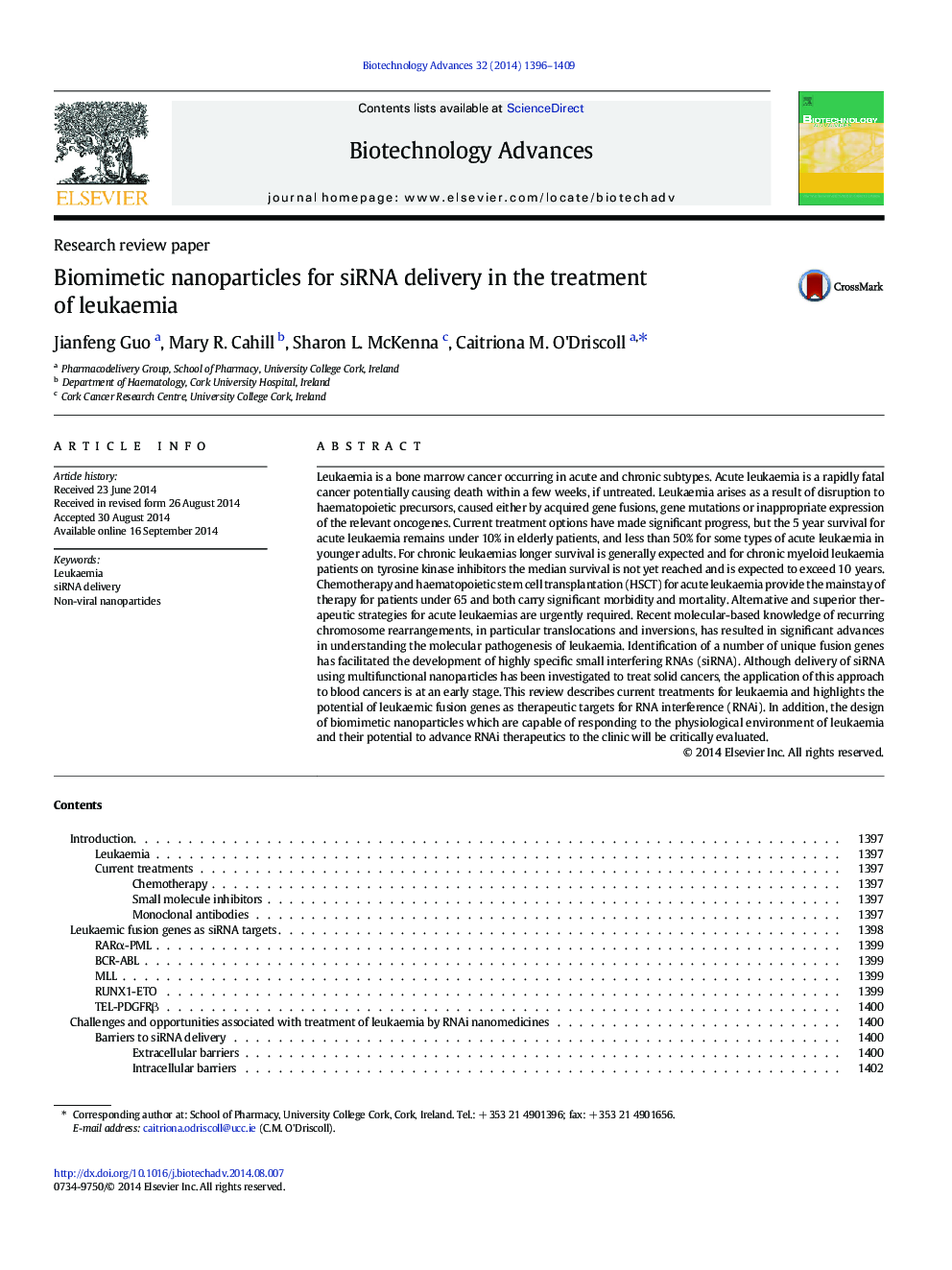| Article ID | Journal | Published Year | Pages | File Type |
|---|---|---|---|---|
| 14283 | Biotechnology Advances | 2014 | 14 Pages |
Leukaemia is a bone marrow cancer occurring in acute and chronic subtypes. Acute leukaemia is a rapidly fatal cancer potentially causing death within a few weeks, if untreated. Leukaemia arises as a result of disruption to haematopoietic precursors, caused either by acquired gene fusions, gene mutations or inappropriate expression of the relevant oncogenes. Current treatment options have made significant progress, but the 5 year survival for acute leukaemia remains under 10% in elderly patients, and less than 50% for some types of acute leukaemia in younger adults. For chronic leukaemias longer survival is generally expected and for chronic myeloid leukaemia patients on tyrosine kinase inhibitors the median survival is not yet reached and is expected to exceed 10 years. Chemotherapy and haematopoietic stem cell transplantation (HSCT) for acute leukaemia provide the mainstay of therapy for patients under 65 and both carry significant morbidity and mortality. Alternative and superior therapeutic strategies for acute leukaemias are urgently required. Recent molecular-based knowledge of recurring chromosome rearrangements, in particular translocations and inversions, has resulted in significant advances in understanding the molecular pathogenesis of leukaemia. Identification of a number of unique fusion genes has facilitated the development of highly specific small interfering RNAs (siRNA). Although delivery of siRNA using multifunctional nanoparticles has been investigated to treat solid cancers, the application of this approach to blood cancers is at an early stage. This review describes current treatments for leukaemia and highlights the potential of leukaemic fusion genes as therapeutic targets for RNA interference (RNAi). In addition, the design of biomimetic nanoparticles which are capable of responding to the physiological environment of leukaemia and their potential to advance RNAi therapeutics to the clinic will be critically evaluated.
